Baseball cards have exploded in popularity, becoming a billion-dollar industry. During the COVID-19 shutdown, millions started collecting again after going through their old card collections from the 1980s. It brought back a sense of nostalgia. Unfortunately, baseball cards from the 1980s were mass-produced, so people who thought they were sitting on a gold mine holding onto those cards won’t have much to show for it. However, there are some cards from the ’80s that can still get a pretty penny and have great eye appeal. And because of that, StudyFinds has put together a list of the best 1980s baseball cards.
The 1980s marked an exciting era for baseball cards, characterized by vibrant designs, holographic elements, and rookie cards of the next generation of legendary players. The transition from the “vintage” look of traditional cards to more modern motifs captured the essence of a thrilling new decade in baseball history. With their unique blend of artistry and sports memorabilia, these cards remain cherished by enthusiasts and evoke a sense of nostalgia for a bygone era.
Speaking of nostalgia, it is common for people to collect things from their past that tend to evoke a sense of it. A poll of 2,000 American Gen Zers and millennials found that, if given the opportunity, 67 percent would try to buy a replica of something from their childhood and 76 percent feel a sense of nostalgia in the process. This comes as two in three (65%) adults realize they can now buy things for themselves that their parents would never let them have or couldn’t buy for them as a kid.
Are you ready to take a trip through time? StudyFinds has found the top five best 1980s baseball cards. Did we miss one of your favorites? Let us know in the comments below!
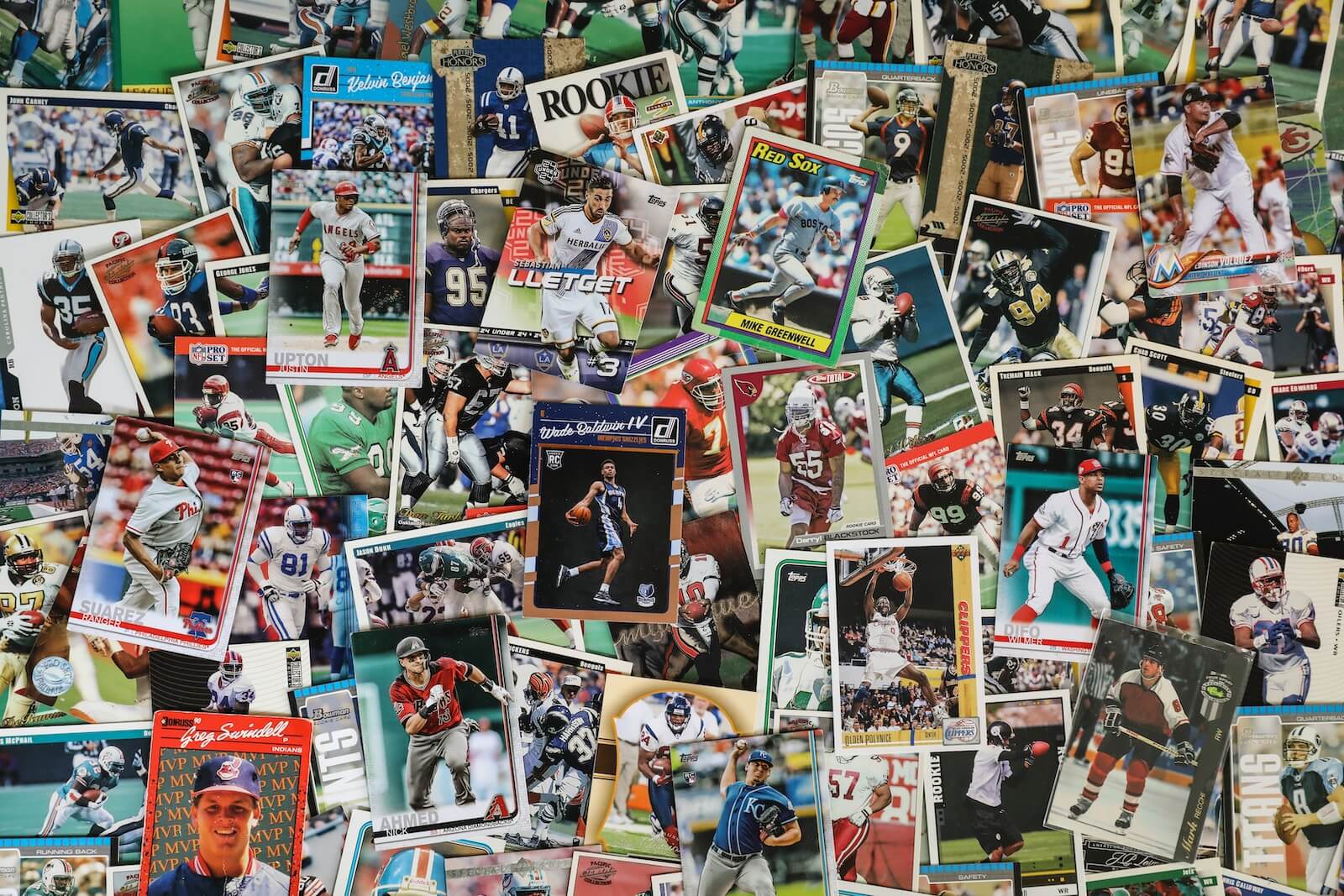
The List: Best 1980s Baseball Cards, According to Experts
1. 1980 Topps Rickey Henderson Rookie Card
The best card from the ’80s is the 1980 Topps Rickey Henderson rookie card. The Hall-of-Famer holds the records for most stolen bases and most runs scored of all-time in Major League Baseball. “First, The Rickey Henderson 1980 Topps #482 card is an iconic example of understated beauty. It captures the compact yet utterly devastating batting stance of the ‘Man of Steal,'” writes Cardbase. “Then of course, there is the grading issue. Yes, there are a ton of these cards out there. But centering issues of the 1980 Topps Baseball set (common to late 1970s and early 1980s Topps cards) make it an almost impossible PSA 10. Therefore, you will only find 26 PSA 10s out of an incredible 31,448 graded cards. That makes the gems incredibly valuable and significantly lowers the premium on PSA 9s.”
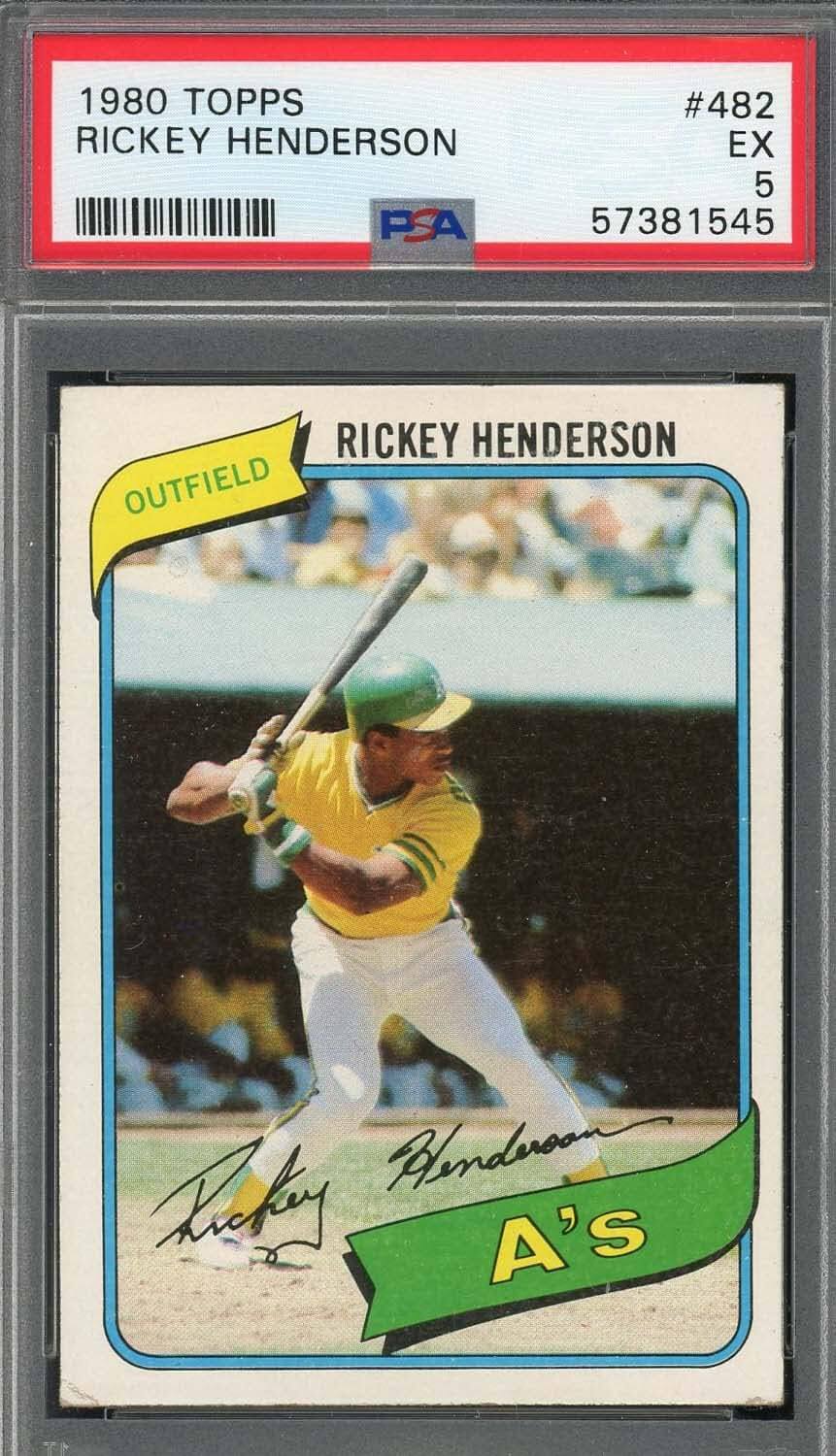
“You want the Rookie Card of the major league’s all-time runs scored and stolen base leader? You’ve come to the right place,” says Beckett.
Old Sports Cards considers Henderson’s rookie card “to be the last big-name vintage rookie…And while its value pales in comparison to other big-name vintage rookies like Mickey Mantle, Willie Mays, Hank Aaron, and Roberto Clemente, to name a few, its price soared dramatically during the recent sports card boom. I remember several years ago you could find this card in a PSA 9 holder quite easily for $400 or so, which made it undervalued even back then. However, during early 2021, PSA 9 examples of this card frequently sold for $4,000 – $5,000 or more. Recently, the price of a PSA 9 has continued to steadily fall to around $2,000 or less. But, PSA 10 examples of this card can sell for six figures.”
2. 1989 Upper Deck Ken Griffey Jr. Rookie Card
Ken Griffey Jr.’s 1989 Upper Deck rookie card might be the most iconic card from the ’80s. “Who cares if there are more copies printed to stretch around the world … twice? One of the most important cards of the post-WWII era, ushering in a new, premium brand into the baseball card aisles and leading off that ground-breaking set with the Rookie Card of arguably the most impactful player of his era,” writes Beckett.
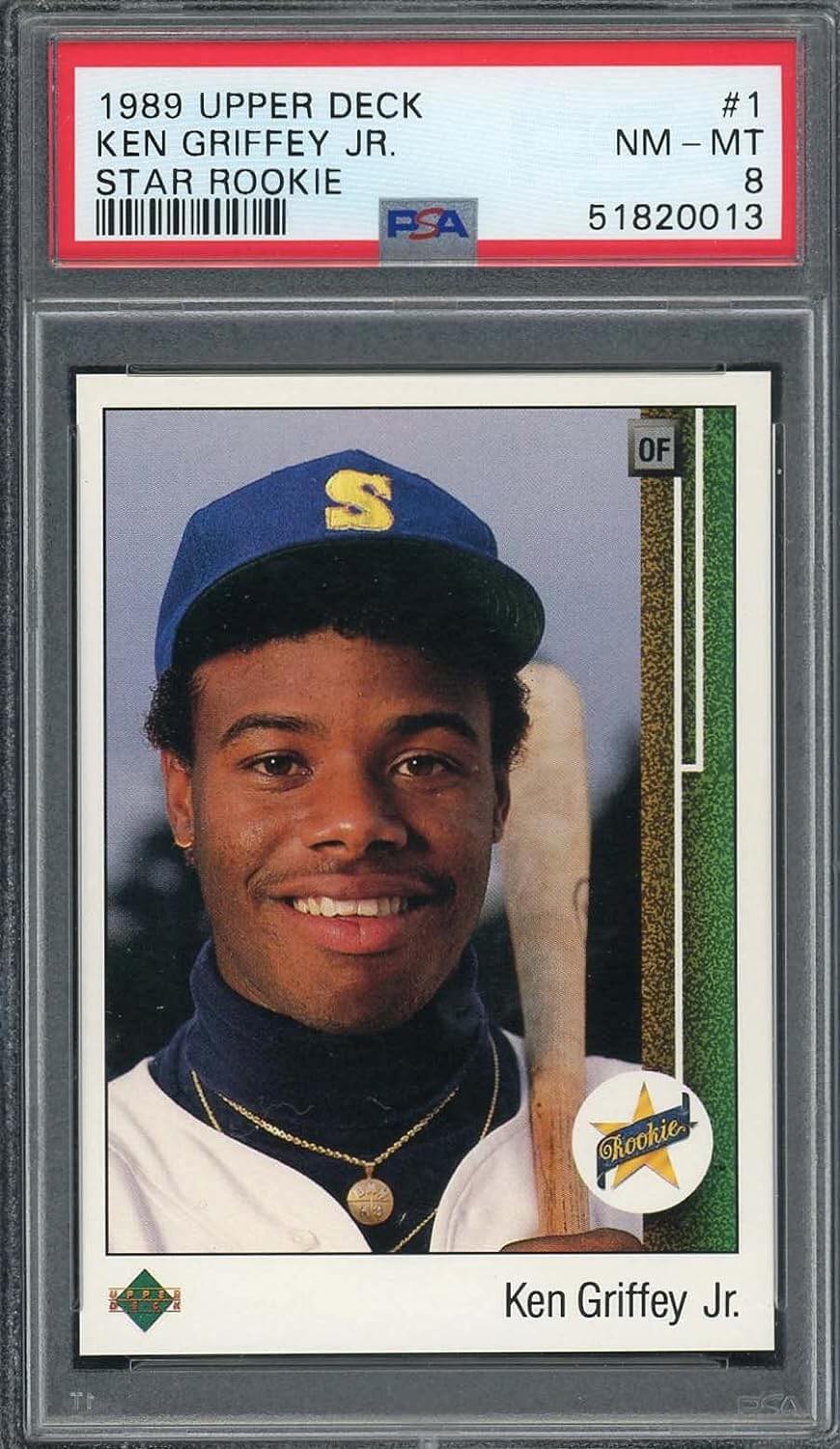
“It was a stroke of genius for the company who wanted to change the cardboard world to make the game’s premier prospect — the best we’d seen in a generation — their very first card. The marriage was magical and became even more so as both UD and Junior took off over the next decade,” says Wax Pack Gods. “While you can bicker about whether Upper Deck was ultimately good or bad for the hobby, and while you can deride Griffey’s late-career ‘achievements’ with the Reds and White Sox (I know I have), there is no denying that the Griffey rookie card is an absolute hobby legend.”
Ballcard Genius called Griffey’s Upper Deck rookie card the “holy grail of card collecting in the pre-eBay days…Look at the card number. It’s #1 in the set. Here you have the first edition of Upper Deck baseball cards, and the first card in their set is none other than the rookie card of one of the most talented, electric players to ever take the field. Whoever was on the numbering team apt UD during that time and prognosticated Junior Griffey’s Hall of Fame better have gotten a raise.”
3. 1985 Topps Mark McGwire
The 1985 Topps Mark McGwire card exploded in price when he broke Roger Maris’ record for most home runs in a season in 1998. What made this card unique is that it’s not McGwire’s rookie card — Topps included players from the 1984 U.S. Olympic Baseball team. “In 1985, Topps included cards of several players from the 1984 Olympic baseball team. Mark McGwire ended up being the most prominent of these players. Most people consider this the Mark McGwire rookie card. Technically it’s a pre-rookie card, but that’s OK,” writes The Silicon Underground. “It became valuable as soon as McGwire hit the majors in 1987 and swatted 49 home runs. In 1998, he captured the public imagination by racing Sammy Sosa to break and then eclipse Roger Maris’ single-season home run record. But two years later he was no longer healthy enough to play every day, and allegations of PED use marred his Hall of Fame case. Today you can get a nice graded example of this card for under $20.”
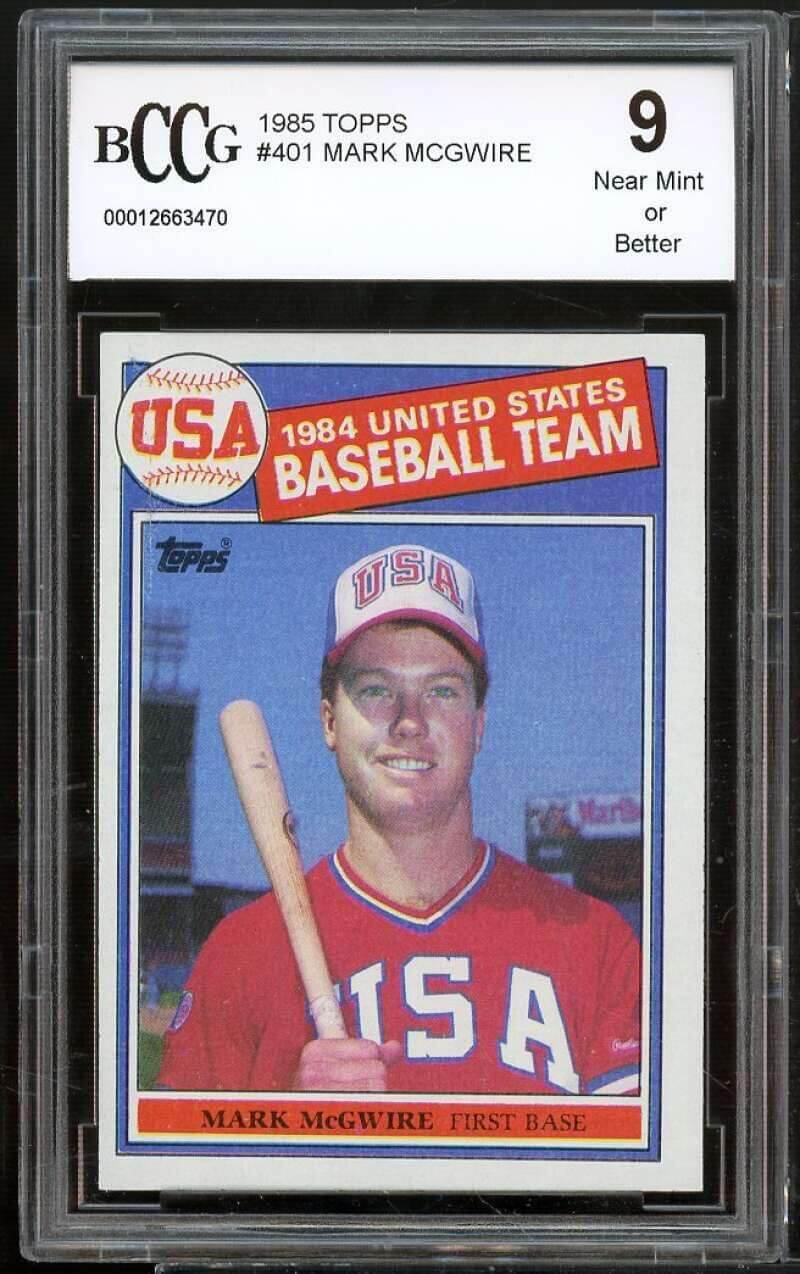
“The USA Baseball subset in 1985 Topps introduced the program to the masses, and brought this slugging first baseman’s first licensed trading card to the forefront of the collectibles industry,” notes Beckett. “Everybody wanted one. And everybody paid good money for it two years later when McGwire was slugging his way to 49 home runs as a rookie.”
Sports Card Investor says the McGwire Olympic card “brought the whole world together” in the ’80s. “These days, most Olympic cards aren’t given a second thought when they’re ripped in packs. That’s a huge contrast from the mid- and late-‘80s, when this baby popped in your hands. A smiling Big Mac donned in red, white and blue? Talk about a card that brought the whole world together.”
4. 1982 Topps Traded Cal Ripken Jr. Rookie Card
Topps made two rookie cards of Cal Ripken Jr. in 1982, but his Topps Traded card is the more popular — and more expensive — of the two. “One of Cal Ripken Jr’s most valuable baseball cards from the 1980s is his 1982 Topps Traded rookie card,” writes Graded Card Investor. “With the bright orange curved borders and team and player names, the design of the card pairs up nicely with the Orioles team colors.”
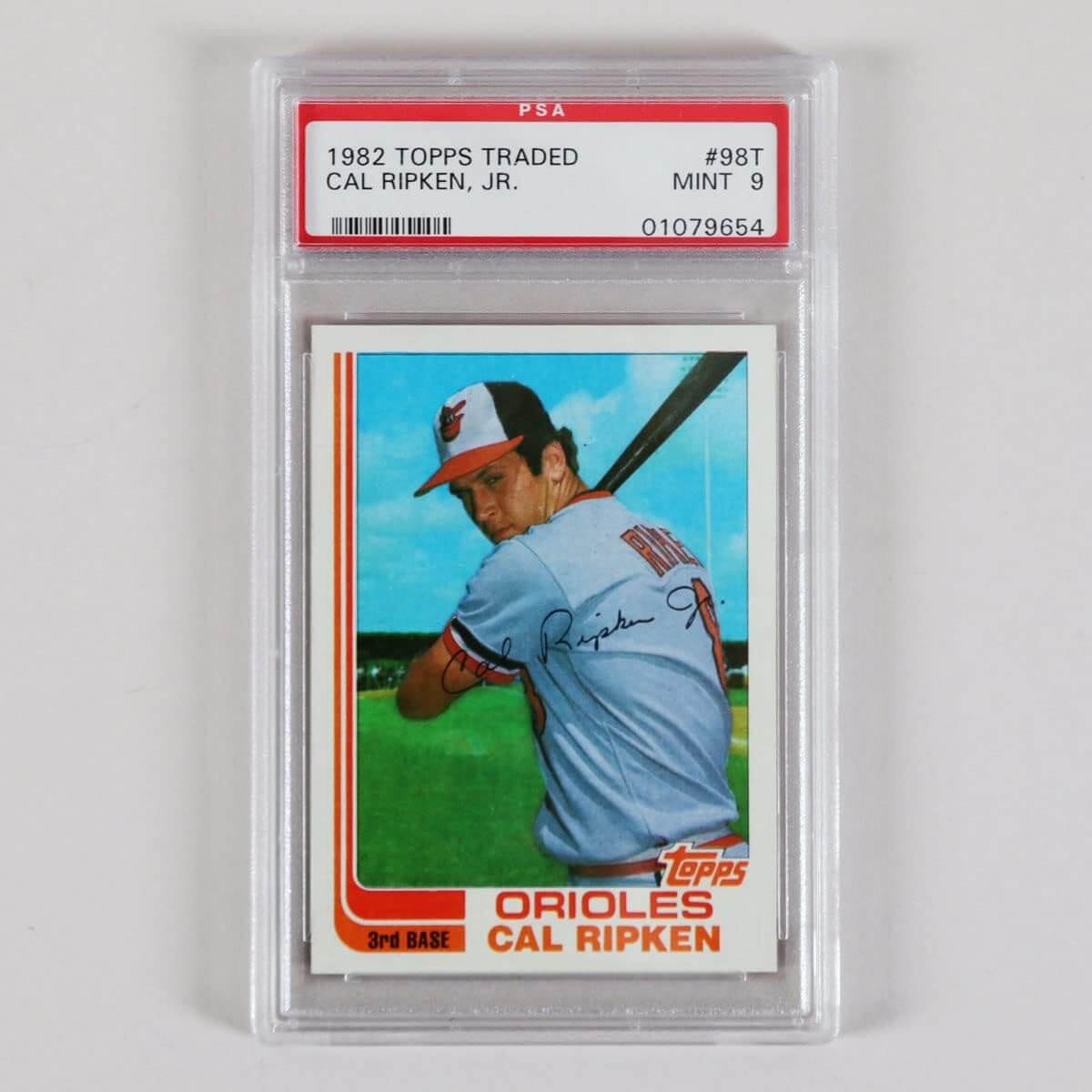
“Of course, the real heavyweight among Ripken rookies is his 1982 Topps Traded card, issued after that ROY performance was in the books,” says Wax Pack Gods. “Part of the appeal is that this is Rip’s first solo Topps card after having shared his base card with Bob Bonner and Jeff Schneider. The other main factor in the Traded card’s favor is that it was available only as part of the complete boxed set of 132 cards, making it scarcer than the more widely distributed base card.”
Nerdable called “The Iron Man’s” Topps Traded card “Ripken’s true rookie card.” “For many collectors, this is Ripken’s true rookie card. The one listed above is a ‘shared’ card that included the faces of two other players, Bob Bonner and Jeff Schneider. Plus, this issue came out after Ripken’s incredible Rookie of the Year season. So it hit the streets with the appeal that meant any kid who knew his baseball players at the time would be keeping a special place in a collection for this one.”
5. 1984 Donruss Don Mattingly
Rounding out the top five cards from the 1980s is Don Mattingly’s 1984 Donruss rookie card. “Aside from being the name of a dystopian novel and Van Halen’s best album, 1984 was also one of the last years before the dawn of the ‘Junk Wax’ era. The 1984 Donruss Don Mattingly #248 card is one of the rookie cards that ushered in that oft-maligned era. It shows the promising young rookie in his Yankees cap, already looking like a jaded veteran,” writes Cardbase. “Since Don Mattingly was the up-and-coming young prodigy for the most popular team in baseball, collectors were all over this card. It may not have brought in the millions they were hoping for, but since Mattingly had a strong career as a player and a lesser extent, as a manager, it still holds value. Some of it is definitely nostalgic.”
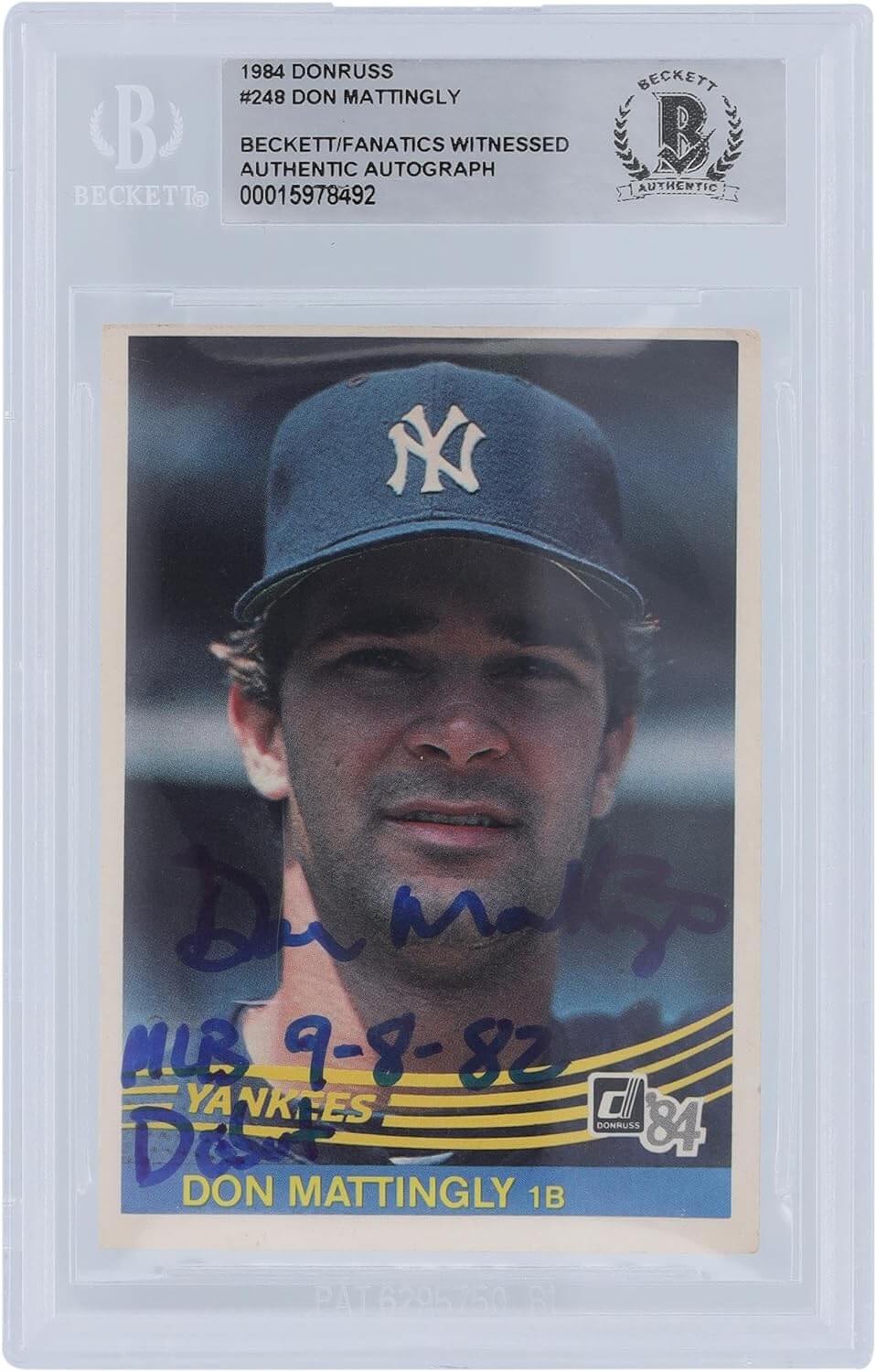
“In 1984, the young slugger put on a clinic that cemented his spot and won the hearts of Yankees fans the world over. While New York faded from the postseason race in September, Mattingly kept the city enraptured with a batting crown race for the ages,” notes Old Sports Cards. “Headed into the last weekend of the season, Mattingly held an AL-best .342 average while his teammate Dave Winfield sat in second at .341. Mattingly struggled on Friday and Saturday but wrestled the title from Winfield with a 4-for-5 masterclass on the last day of the season. The fans roared their approval and Winfield shook his hand with a knowing glance. A first-time All-Star and fifth-place finisher in the AL’s MVP race, Mattingly’s time as the face of the Yankees was here. Not only is Mattingly’s rookie card the face of this set, but it’s also one of the most iconic of the 1980s.”
Beckett says if you had Mattingly’s Donruss rookie card back in the day, you were seen as royalty. “This was the card, more so than any other in the first half of the 1980s, that promoted perceived scarcity and status. If you owned a ’84 Donruss Mattingly, you owned the neighborhood. You were royalty. And you were living large.”
You might also be interested in:
Sources:
- Cardbase
- Old Sports Cards
- Beckett
- Sports Card Investor
- Graded Card Investor
- 80s Kids
- Wax Pack Gods
- Ballcard Genius
- Nerdable
- The Silicon Underground
Note: This article was not paid for nor sponsored. StudyFinds is not connected to nor partnered with any of the brands mentioned and receives no compensation for its recommendations. This post may contain affiliate links.
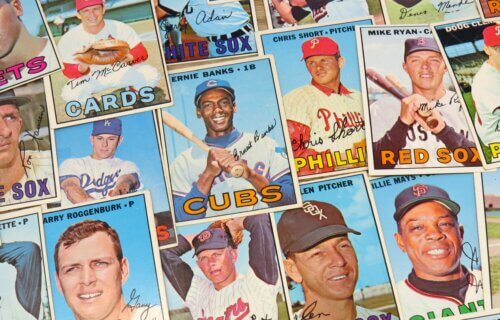
I would have had the 1984 TT Clemens,Gooden,@ and Puckett before the 84 Donruss Mattingly.
I am looking for a 85 TT Clemens gem mint
There is no 84TT,85TT Clemens or 84TT Puckett.
I have many cards. I would like to sell them. 80’s and 90’s
I have about 1900 baseball and football card like to sell
I have so many cards it’s unreal I collected them in the bubble gum I probably have four or five thousand and I have I found a lot of these cards and then I found some that are misprints that don’t have the dock behind the Inc
I’ve got a baseball card
CARDINALS LOU BROOK
1979 IS IT WORTH ANTHING
I have begun to look into collecting baseball cards because the previous tenant at my old job left a whole bunch of baseball cards from 1987 to 1990. I got a bunch of good ones on paper. However, seeing that so many cards were left behind, I have to imagine that the baseball cards from these years were mass produced. Therefore, they are worth less than they should.
I am not into making a profit off of these cards. I would like to trade them for cards that I don’t have and of players that I grew up watching. Would anybody ever trade for the likes of Roger Clemens, Jim Rice, Cal Ripken Jr, Bo Jackson, Mark McGwire, Ozzie Smith, Willie McGee, Tony Gwynn?
I have topps case of cards still in wax paper with bubble bubble gum sticks